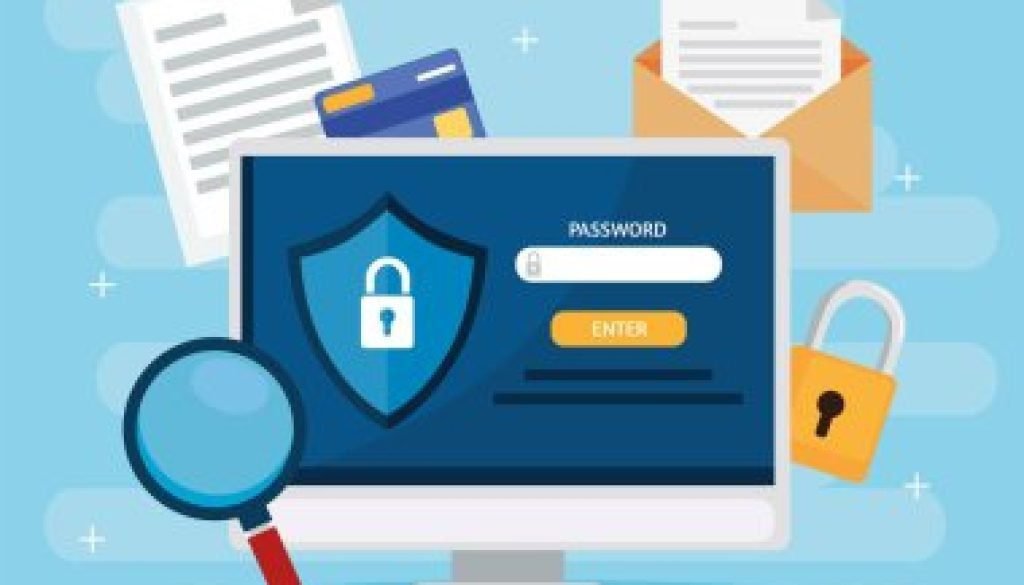Cybersecurity Essentials for Software Developers
In today’s digital age, software development is essential, from mobile apps to complex systems. But as software advances, so do the threats. Cybersecurity isn’t just an option; it’s a necessity right from the start. In this guide, we’ll explore the key steps to ensure your software isn’t just functional but also safe from cyber threats. Lets explore Cybersecurity Essentials for Software Developers.
Understanding the Stakes
Before we dive into the details, it’s crucial to understand why this is so important. Cyberattacks have become more sophisticated, leading to data theft, financial losses, and damage to reputations. Prioritizing cybersecurity is not just a good idea; it’s a must.
Secure Coding Practices
Input Validation
Hackers often try to take advantage of weak input checks. To protect your software, make sure to thoroughly check what users input to prevent malicious code from sneaking in through forms or APIs. Only allow known safe input to reduce vulnerabilities from the beginning.

Encryption
Encrypt all data when it’s moving or resting. Use Secure Socket Layer (SSL) or Transport Layer Security (TLS) to protect data during transmission. For data at rest, use strong encryption to keep sensitive information safe, making it difficult for hackers to access even if they breach security.
Authentication and Authorization
Make sure that users can only access what they’re supposed to. Use strong ways to check who they are, and only let them access resources they’re allowed to. If possible, use multi-factor authentication and be clear about user roles and permissions. This will prevent unauthorized access and data breaches.
Secure Software Development Lifecycle (SDLC)
Threat Modeling
By including threat identification in your development process, you can find vulnerabilities early, reducing the chance of security problems in the final product. It helps you understand your software’s weak points and fix them before they can be exploited.
Code Reviews
Regular code reviews by experienced developers and security experts can find and fix problems before they become major issues. They also help create a culture of quality and continuous improvement.
Read about Software Engineer vs Programmer: Software Engineer vs. Programmer – Exploring the Key Distinctions
Continuous Monitoring
Intrusion Detection Systems (IDS) and Intrusion Prevention Systems (IPS)
Real-time monitoring of network traffic, system logs, and application behavior is essential. IDS and IPS can spot and stop suspicious activities, preventing breaches.
Regular Vulnerability Scanning
Regularly scan for vulnerabilities to identify and fix weaknesses in your software and network. This should be part of your routine maintenance to stay ahead of new threats.

Incident Response Plan
Develop an Incident Response Plan
Even with strong security measures, it’s essential to be ready for the worst. Having a plan in place helps your organization respond quickly and effectively to security breaches, minimizing damage and downtime.
Employee Training
Security Awareness Training
Ensure your development team and employees are well-trained in security best practices through regular training sessions. This helps everyone understand evolving threats and how to respond to potential risks.

Compliance with Regulations
Stay Compliant
Depending on your industry, you may need to follow various regulations. Make sure your software development practices align with these rules to avoid legal issues and enhance security.
Conclusion to Cybersecurity Essentials for Software Developers
In conclusion, the importance of cybersecurity in software development cannot be emphasized enough. It’s a proactive approach to protect your software from evolving threats and potential breaches. By following secure coding practices, integrating cybersecurity into your development process, continuously monitoring for vulnerabilities, having an incident response plan, training your employees, and ensuring regulatory compliance, you can stay ahead of cyber threats. Protect your software, data, and reputation by making cybersecurity an integral part of your development process.
Additional Link
- Cybersecurity in Software Development – ValueCoders
- Cyber security in software development: 12 outsourcing tips
- Security Topics Every Software Developer Should Know
- 10 Best Practices for Software Development Security

FAQs
1. What is “Cybersecurity Essentials for Software Developers”?
“Cybersecurity Essentials for Software Developers” is a comprehensive training program designed to equip software developers with the fundamental knowledge and skills needed to secure their applications and systems against cyber threats.
2. Why is cybersecurity important for software developers?
Cybersecurity is essential for software developers because they play a critical role in creating and maintaining secure software applications. Failure to implement proper security measures can lead to data breaches, vulnerabilities, and other security incidents.
3. What topics are covered in this training program?
This program covers a range of cybersecurity topics, including secure coding practices, threat modeling, encryption, authentication, access control, security testing, and best practices for securing web and mobile applications.
4. Is this program suitable for both beginners and experienced developers?
Yes, this program is designed to cater to both beginners and experienced developers. It starts with the basics and gradually progresses to more advanced topics, making it accessible to individuals with varying levels of experience.

5. How long does the training program take to complete?
The duration of the program can vary depending on your pace of learning. On average, it may take several weeks to complete. However, you can learn at your own pace.
6. Do I need prior cybersecurity knowledge to enroll in this program?
No, you do not need prior cybersecurity knowledge. This program is designed to provide a foundational understanding of cybersecurity concepts for software developers.
7. Are there any prerequisites for enrolling in the program?
While there are no strict prerequisites, having a basic understanding of software development concepts and programming languages can be helpful. However, even individuals with minimal programming experience can benefit from the program.
8. What are the career benefits of completing this program?
Completing the “Cybersecurity Essentials for Software Developers” program can enhance your career prospects. It makes you a more valuable and responsible developer, opens up opportunities in cybersecurity roles, and helps you contribute to safer software development practices.
9. Is there a certification provided upon completion of the program?
Typically, certification is provided upon successful completion of the program. This certification can be a valuable addition to your resume and demonstrates your commitment to cybersecurity in software development.
10. How can I enroll in the “Cybersecurity Essentials for Software Developers” program?
You can enroll in the program by visiting our website, where you’ll find information on registration, course details, and pricing.
11. Can I access the course materials at any time, or is it a scheduled course?
The program typically allows you to access course materials at your own convenience. You can learn and complete the program based on your schedule.
12. Is technical support available during the program if I have questions or encounter issues?
Yes, technical support and assistance are usually available to help you with any questions or issues you may encounter while taking the program.
13. Are there any group discounts available for organizations that want to enroll their developers in this program?
Yes, some organizations may offer group discounts for enrolling multiple developers in the program. You can inquire about group rates when registering.
14. Can I use the knowledge gained from this program to enhance the security of my personal software projects?
Absolutely! The knowledge and skills gained from this program can be applied to enhance the security of your personal software projects, as well as projects you work on professionally.
15. What sets this training program apart from other cybersecurity courses?
This program is specifically tailored for software developers, focusing on the essential cybersecurity knowledge and practices needed in the software development field. It combines theory with practical guidance to address the unique challenges developers face in securing their applications.
MCQs
1. Which of the following best describes cybersecurity for software developers?
- A) Protecting hardware from physical damage
- B) Securing software applications and systems from cyber threats
- C) Creating firewalls and network security protocols
- D) Ensuring data privacy for end users
Answer: B) Securing software applications and systems from cyber threats
2. What is the primary goal of threat modeling in cybersecurity?
- A) To identify potential security threats and vulnerabilities in a system
- B) To create an attractive target for hackers
- C) To develop a user-friendly interface
- D) To improve software performance
Answer: A) To identify potential security threats and vulnerabilities in a system
3. Which of the following is not an example of a common authentication factor?
- A) Something you know
- B) Something you have
- C) Something you are
- D) Something you want
Answer: D) Something you want
4. What does the term “SQL injection” refer to in cybersecurity?
- A) A technique for protecting databases from unauthorized access
- B) An attack where malicious SQL code is injected into an input field
- C) A secure way to store passwords in a database
- D) A type of firewall
Answer: B) An attack where malicious SQL code is injected into an input field
5. Which encryption type uses the same key for both encryption and decryption?
- A) Symmetric encryption
- B) Asymmetric encryption
- C) One-time pad encryption
- D) Double-key encryption
Answer: A) Symmetric encryption
6. Which of the following HTTP methods is considered safe and should not cause any side effects on the server?
- A) GET
- B) POST
- C) DELETE
- D) PUT
Answer: A) GET
7. What is the purpose of the “same-origin policy” in web security?
- A) To ensure all websites have the same content
- B) To prevent scripts from one origin accessing resources from a different origin
- C) To promote cross-origin data sharing
- D) To disable web cookies
Answer: B) To prevent scripts from one origin accessing resources from a different origin
8. What is the primary purpose of penetration testing in cybersecurity?
- A) To exploit vulnerabilities for malicious purposes
- B) To simulate real-world attacks to identify and fix security weaknesses
- C) To encrypt sensitive data
- D) To create secure passwords
Answer: B) To simulate real-world attacks to identify and fix security weaknesses
9. Which of the following is an example of a strong password?
- A) “123456”
- B) “P@ssw0rd”
- C) “MyDog’sName123”
- D) “abcdef”
Answer: B) “P@ssw0rd”
10. What does the acronym “CORS” stand for in web security?
- A) Cross-Origin Resource Sharing
- B) Common Online Resource Standard
- C) Cross-Origin Request Security
- D) Centralized Origin Retrieval System
Answer: A) Cross-Origin Resource Sharing



